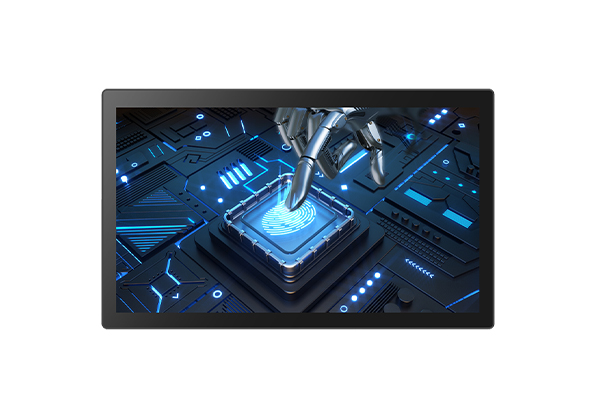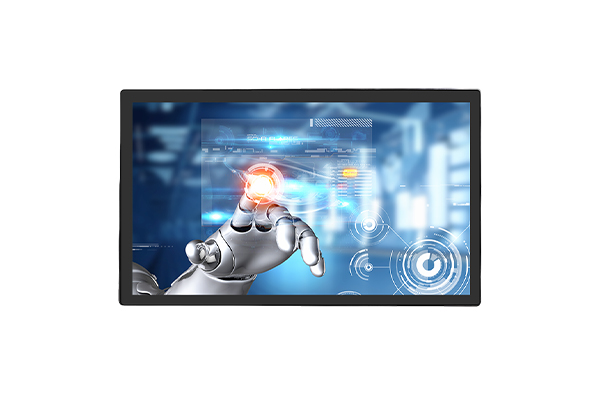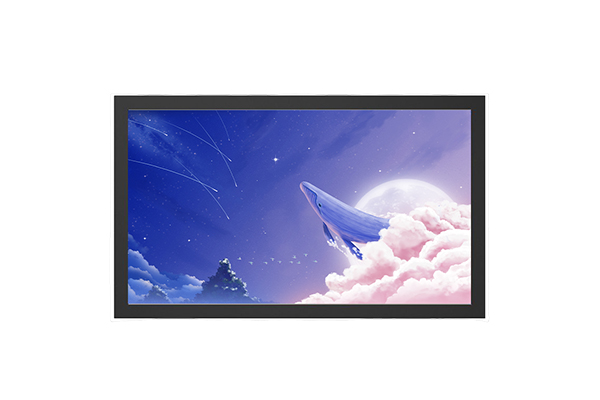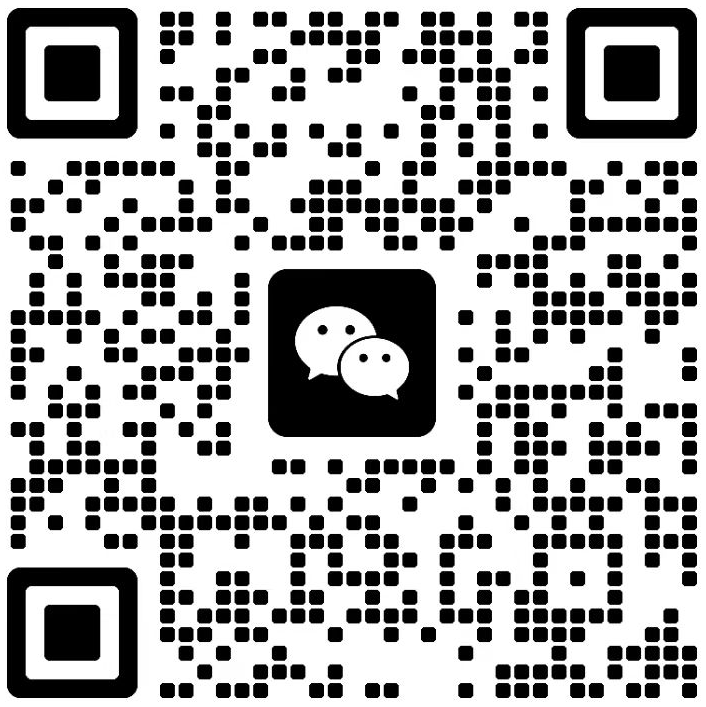How does the multi-touch technology of open frame touch monitors enable smooth gesture operations, enhancing the intuitiveness and responsiveness of human-computer interaction?
Release Time : 2025-09-25
In today's evolving landscape of human-computer interaction, the screen is no longer merely a window for one-way information transmission, but has become a direct channel for users to express their intentions. With its multi-touch technology, the open frame touch monitor transforms every touch, swipe, and zoom gesture into precise commands, revolutionizing the indirect and cumbersome nature of traditional mouse and keyboard operation. The core of this technology lies in its ability to simultaneously recognize multiple touch points and real-time analyze their movement paths and combinations, resulting in a natural, intuitive, and efficient user experience.
Multi-touch functionality relies on a sophisticated sensing layer. Beneath the display surface lies a grid of fine conductive wires. When a finger approaches or touches the screen, it alters the local electric field distribution. The system detects these subtle changes to precisely calculate the position of each touch point. Due to the high-density sampling capability of the sensing layer, even with multiple fingers moving rapidly, the system can clearly distinguish each individual path, without any confusion or loss of data. This parallel processing mechanism allows for smooth execution of complex gestures such as two-finger zooming, three-finger scrolling, and four-finger switching.
The intuitiveness of gesture operation stems from its close alignment with natural human behavior. Enlarging an image no longer requires finding a button; simply spread two fingers apart. Scrolling through a long page doesn't require dragging a scroll bar; simply swipe up or down. Rotating an image doesn't require a tool; just rotate two fingers. These actions are intuitive and require no learning, making them accessible to users of all ages and technical backgrounds. In public kiosks, educational whiteboards, or retail terminals, this "what you see is what you get" interaction significantly lowers the barrier to entry and improves information access efficiency.
Response speed is crucial for a smooth experience. From the moment a finger touches the screen to the interface's response, the entire process must be completed in an extremely short time to feel "immediate." The system optimizes signal processing algorithms to reduce data latency, ensuring that touch point recognition and command execution are almost simultaneous. Furthermore, the touch driver is deeply integrated with the operating system, eliminating any lag in the process. Whether it's rapid writing, continuous page turning, or multitasking, the screen always responds instantly to finger movements, without any lag or delay, providing a natural, pen-on-paper-like control experience.
In collaborative scenarios, the advantages of multi-touch are particularly evident. On a classroom whiteboard, teachers and students can write and annotate simultaneously, with different colors clearly distinguishing each user's input, making interactive discussions more dynamic. In design meetings, team members can gather around the screen, collaboratively adjusting layouts and zooming in on details, allowing for immediate presentation and modification of ideas. This collaborative capability breaks the limitations of traditional single-point operation, transforming the display into a true shared workspace.
Furthermore, touch technology supports the integration of multiple input methods. Besides fingers, some devices are compatible with stylus pens, offering a more precise writing and drawing experience. Pressure sensitivity and tilt recognition of the stylus can be used for sketching or signing, meeting professional needs. The system can also intelligently distinguish accidental palm touches from intended inputs, preventing interference during writing and enhancing usability.
Ultimately, the value of multi-touch lies in its ability to bridge the gap between humans and machines. It eliminates the need for external devices or memorizing shortcuts; users can perform complex operations intuitively. When fingers slide, pinch, and tap on the screen, information flows, zooms, and transitions seamlessly—this seamless interaction is the ultimate goal of modern smart devices. On an open frame touch monitor, multi-touch is not just a technology feature, but a language—a language that allows users to directly communicate with the digital world.
Multi-touch functionality relies on a sophisticated sensing layer. Beneath the display surface lies a grid of fine conductive wires. When a finger approaches or touches the screen, it alters the local electric field distribution. The system detects these subtle changes to precisely calculate the position of each touch point. Due to the high-density sampling capability of the sensing layer, even with multiple fingers moving rapidly, the system can clearly distinguish each individual path, without any confusion or loss of data. This parallel processing mechanism allows for smooth execution of complex gestures such as two-finger zooming, three-finger scrolling, and four-finger switching.
The intuitiveness of gesture operation stems from its close alignment with natural human behavior. Enlarging an image no longer requires finding a button; simply spread two fingers apart. Scrolling through a long page doesn't require dragging a scroll bar; simply swipe up or down. Rotating an image doesn't require a tool; just rotate two fingers. These actions are intuitive and require no learning, making them accessible to users of all ages and technical backgrounds. In public kiosks, educational whiteboards, or retail terminals, this "what you see is what you get" interaction significantly lowers the barrier to entry and improves information access efficiency.
Response speed is crucial for a smooth experience. From the moment a finger touches the screen to the interface's response, the entire process must be completed in an extremely short time to feel "immediate." The system optimizes signal processing algorithms to reduce data latency, ensuring that touch point recognition and command execution are almost simultaneous. Furthermore, the touch driver is deeply integrated with the operating system, eliminating any lag in the process. Whether it's rapid writing, continuous page turning, or multitasking, the screen always responds instantly to finger movements, without any lag or delay, providing a natural, pen-on-paper-like control experience.
In collaborative scenarios, the advantages of multi-touch are particularly evident. On a classroom whiteboard, teachers and students can write and annotate simultaneously, with different colors clearly distinguishing each user's input, making interactive discussions more dynamic. In design meetings, team members can gather around the screen, collaboratively adjusting layouts and zooming in on details, allowing for immediate presentation and modification of ideas. This collaborative capability breaks the limitations of traditional single-point operation, transforming the display into a true shared workspace.
Furthermore, touch technology supports the integration of multiple input methods. Besides fingers, some devices are compatible with stylus pens, offering a more precise writing and drawing experience. Pressure sensitivity and tilt recognition of the stylus can be used for sketching or signing, meeting professional needs. The system can also intelligently distinguish accidental palm touches from intended inputs, preventing interference during writing and enhancing usability.
Ultimately, the value of multi-touch lies in its ability to bridge the gap between humans and machines. It eliminates the need for external devices or memorizing shortcuts; users can perform complex operations intuitively. When fingers slide, pinch, and tap on the screen, information flows, zooms, and transitions seamlessly—this seamless interaction is the ultimate goal of modern smart devices. On an open frame touch monitor, multi-touch is not just a technology feature, but a language—a language that allows users to directly communicate with the digital world.









